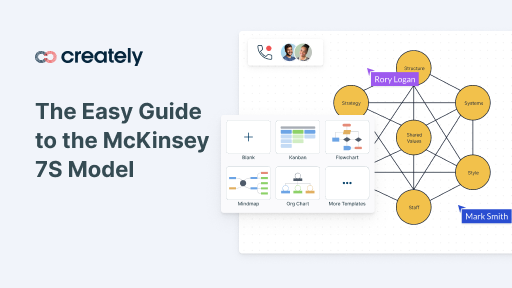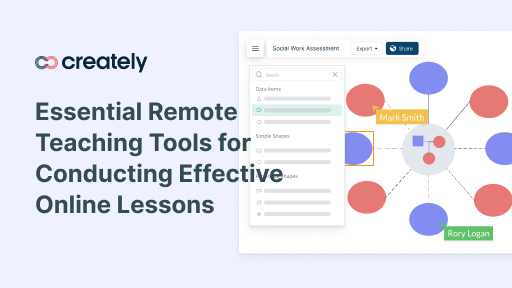Mind mapping helps in many situations. It can be used for work, for organizing a personal or family schedule, for setting your life goals and of course, you can also do a case study analysis using mind maps.
A lot has been said about using this technique in educational processes, both for teachers and for students. However, there are always more ways to make these maps work for you. In this post, we will talk about using mind mapping when working on a case study analysis. So, let’s begin.
Why should students use mind maps?
In one way or another, probably all the students have used mind mapping technique while studying. It is natural for our brain to multitask and to perceive the information simultaneously. When we look at a picture, we see it all at once as a composite image that consists of different details and features.
We naturally think in pictures, or rather collections of images and associations. You see Ronald McDonald, you think of a big mac, then of fries and cola which you ordered from your car when you saw a lamp indicating the necessity of oil change. You think that you need to hit a gas station, maybe tomorrow morning. Oh, no, you cannot do it tomorrow morning as you have an important meeting at work that you have to attend. This is how Ronald McDonald brings you to the thought of a work meeting.
On the whole, mind maps are very natural for our brain as they have similar connection structure. That is why using these maps can improve all the processes connected to our brain activity, including studying processes.
Even before you start your case study
Case studies are usually based on the material students go through in class. So, a lot of information can be taken from the notes you make during lessons. When you make notes in class, mind mapping can help a lot.
All students make notes. Most of them write these notes as a simple text, sometimes highlighting the key points. Such notes have several disadvantages, though:
- They have a difficult structure or no structure at all;
- They take a lot of time to make;
- It ‘s hard to remember something from such notes;
- Creative parts of the brain are not stimulated, as when you only write down what your professor says word by word, you can barely get any associations in your head.
The main flaw of these notes is the lack of structure and key categories. Such papers look like walls of words. Sure, you can highlight some things, but it doesn’t help much. The primary definitions are always hidden by the big amount of text.
If you use mind maps for taking notes, you will remember the information more vividly, especially if you have a photographic memory. Here are the pros of making notes with mind maps:
- You get a clear structure;
- You comprehend the information better;
- You memorize the main categories and key points;
- You get a logical summary;
- You get a minimum text, etc.
So, start preparing for writing case studies beforehand by writing clear notes. Here is the example of using a mind map on pricing models.
The process itself – organizing the material
Mind maps can really help you if you have a lot of different material taken from books, websites, magazines, encyclopedias, etc. If you are overwhelmed with loads of information and don’t know where to start, you can begin with making a mind map adding the information that you have and the sources.
You can start your work with pointing out the main thought, fundamental idea or the message of your case study analysis. If you clearly know what you write this paper for and what conclusion you want to come to, the rest is all about the technique.
The next step is formulating the central thesis of your case study. They can be the subheadings of your work. Then, you can just add any key ideas and thoughts to every subheading. At this point, your mind map will grow, and you will see the whole picture clearly. Thus, it will be much easier for you to write the entire text of your case study analysis.
Here is an example of the mind map of the case study of Antarctica (Case Study Glaciated region: Antarctica/Southern ocean). As you see, there is a lot of information here, but it is easy to comprehend it, if it is in such a visual form instead of different pieces of text.
Using mind maps in case studies
Apart from using mind maps for preparing the material for writing a case study analysis, you can use a map in the work itself.
You can either provide some information through a mind map, duplicate some part of the text to make it clear and visual or to summarize the whole work in a clever way. For example, this very post can be summed up by this easy mind map (How To Deal With Case Study Analysis Using Mind Maps).
Your professors would most likely appreciate such a creative approach to writing a case study analysis, so you should definitely try it once.
Creating a mind map, try not to make it too complicated; it may only confuse you and draw you away from the main points. Sometimes it is easier to make several mind maps instead of trying to fit too much information into just one. Or you might consider creating a concept map.
Using mind maps is not only a great thing for working on a case study analysis but also an excellent technique to use in other educational processes. You should work on your personal style, as mind mapping is a creative activity that can be performed differently by different people.
You can come up with your own ways of processing information and adding it to your maps. It doesn’t matter if your maps are distinct from the ones of other students; every one of us thinks in a different way. Let mind mapping show everyone the way you think.
Alyce Fabel is an inspired blogger and writer working as a private tutor. She writes about educational issues and shares her writing experience. She enjoys writing and loves helping students to become creative and proficient writers. Alyce is a former journalist dreaming of publishing great American novel. Stay in touch via Twitter!








